Ctenoforo tentacolato - Bolinopsis infundibulum
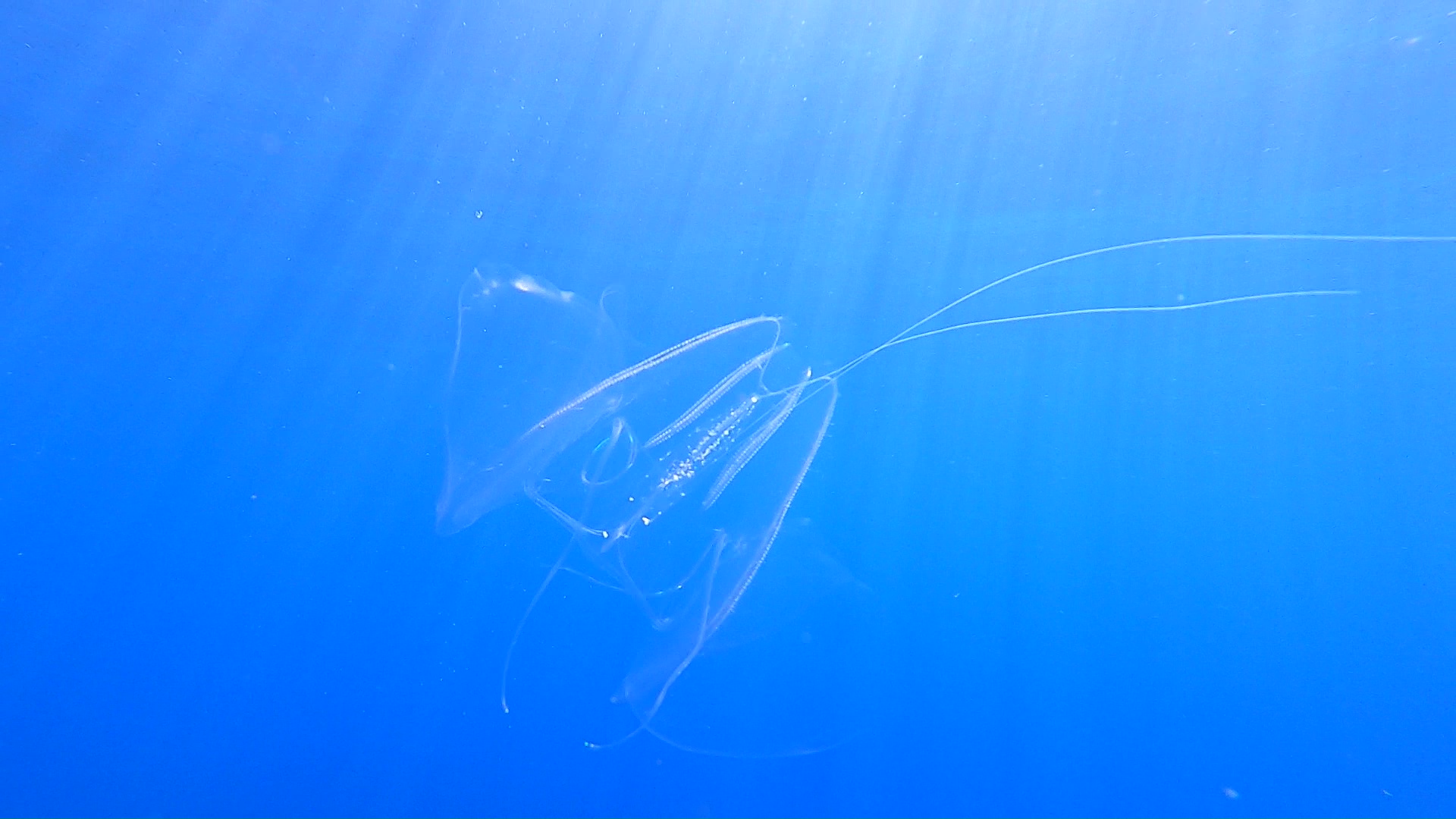
In this collage of videos made in two different dives a few days apart but always in the same stretch of sea we filmed one of the many species of ctenophores that inhabit our Mediterranean Sea, from some research it seems to be the Bolinopsis infundibulum or tentacled Ctenophore. Common northern comb jelly Bolinopsis infundibulum intotheblue.it
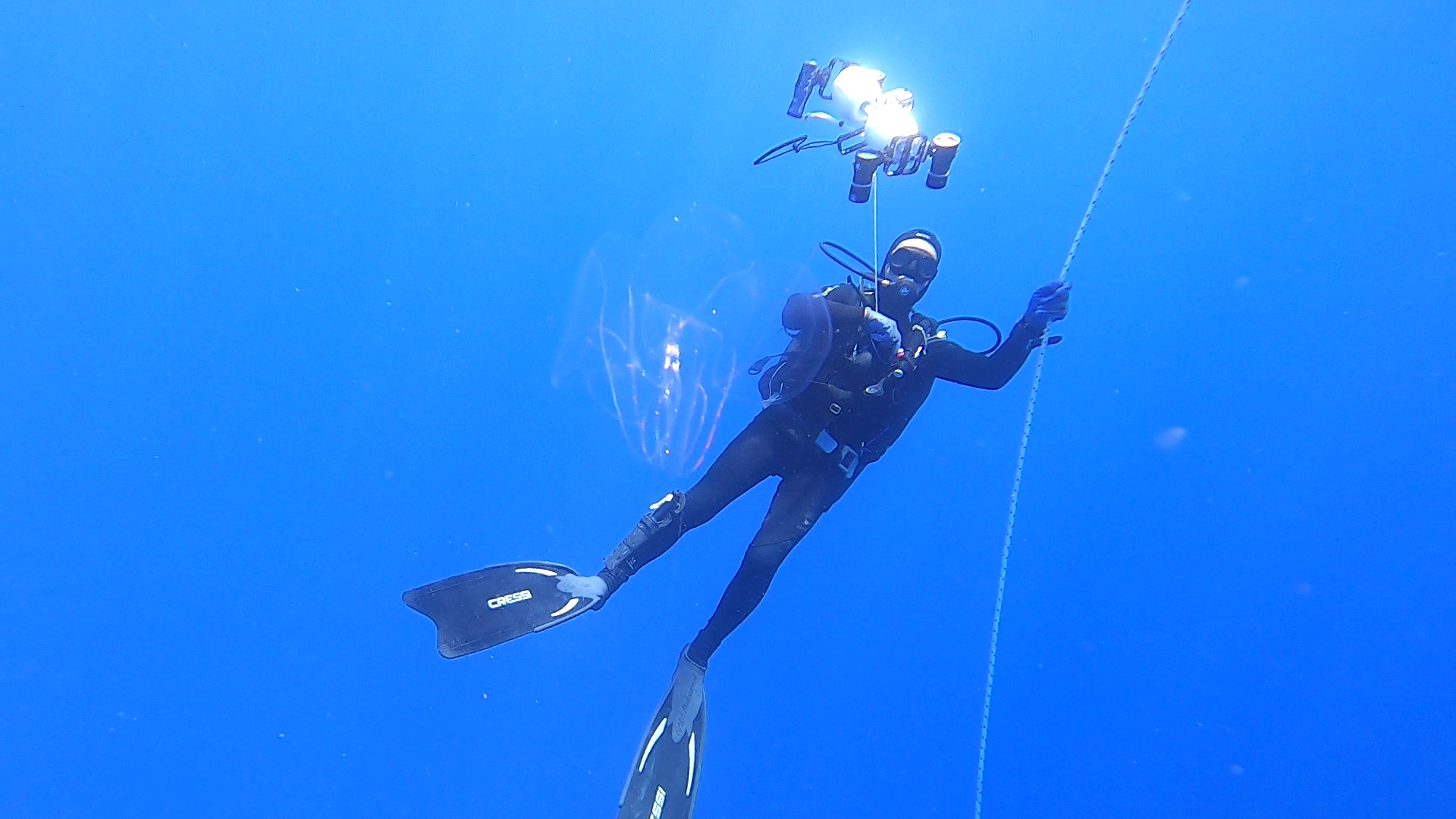
Bolinopsis infundibulum is a species of tentacled ctenophore, first described in 1776 by the naturalist Otto Friedrich Müller.
Description
Bolinopsis infundibulum is an oval ctenophore, up to about 15 cm long, with an almost transparent or whitish appearance. It has two small tentacles. The mouth is located at one end of the body, where there are two large lobes useful for catching food. Here are four auricles that produce currents that allow the animal to capture prey.
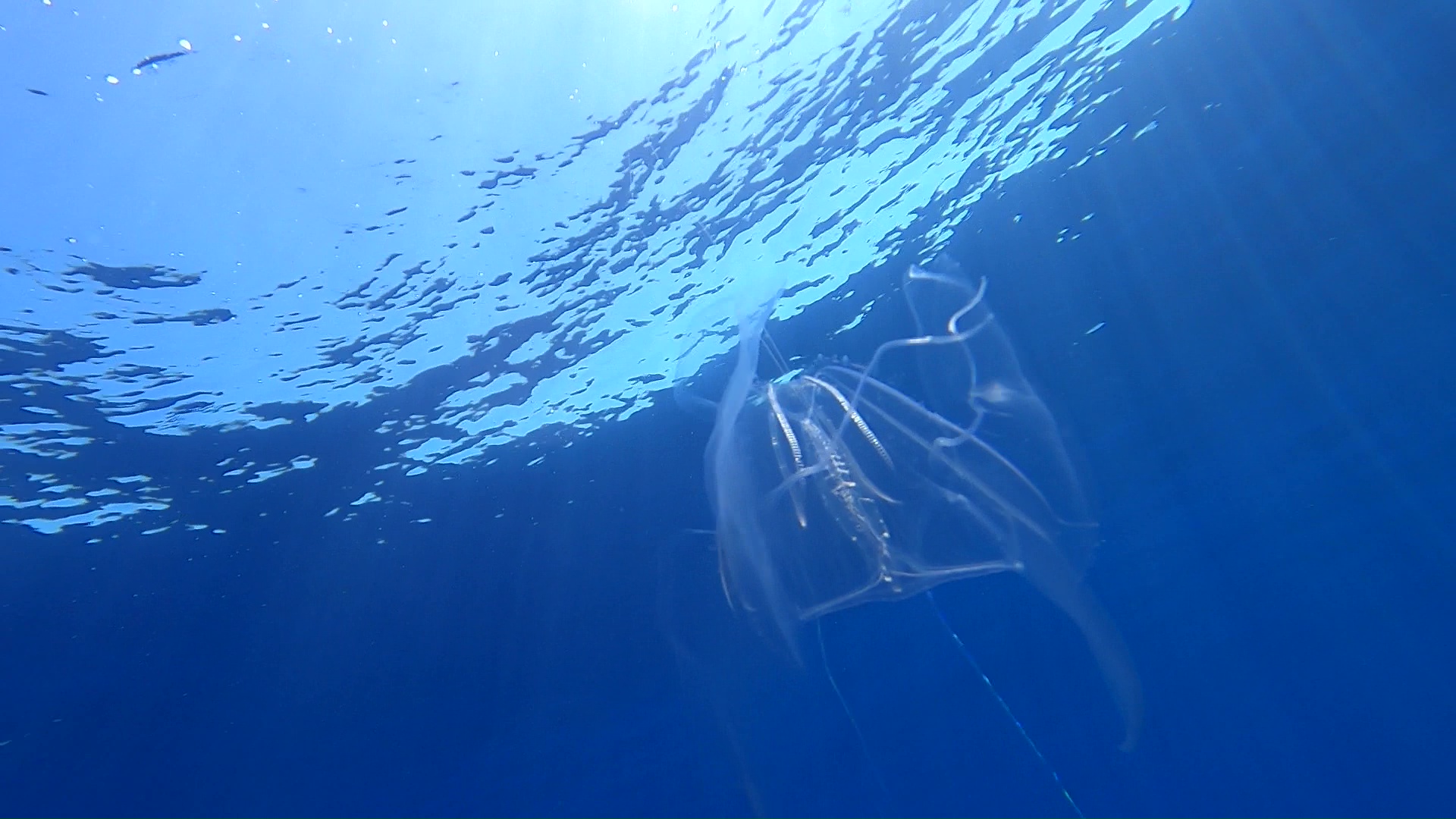
The 8 bioluminescent rows of ctenes allow the animal to move easily along the water column, even if the animal is planktonic. The cats move synchronously, which also gives the animal an iridescent appearance.
Distribution
The range of Bolinopsis infundibulum is very vast: it goes from the North Atlantic to the North Sea, also passing through the Mediterranean Sea. It can be observed at considerable depths (1000 m), but usually younger individuals are found at shallower depths.
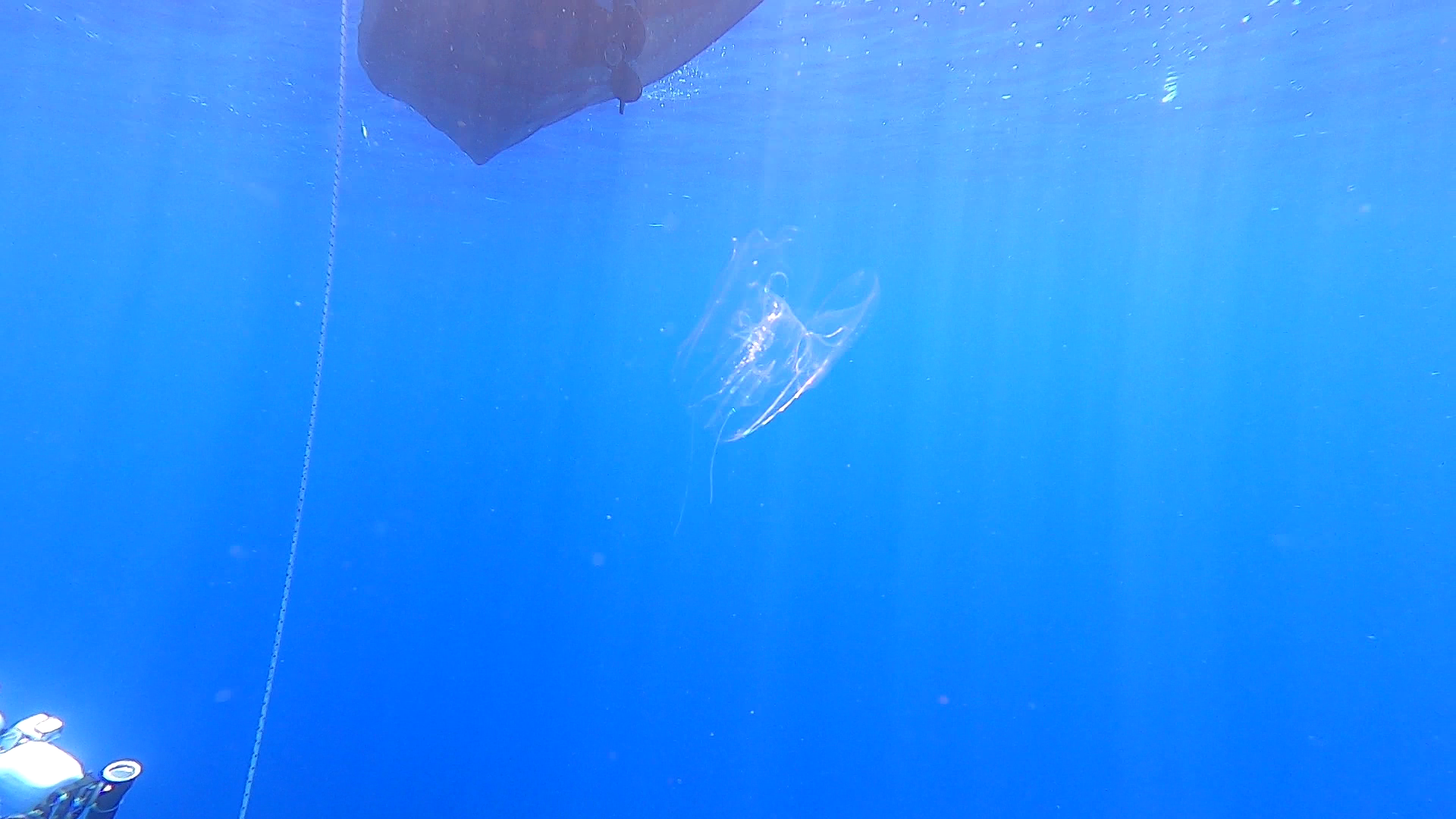
Its resemblance to the more famous sea nut is remarkable: a characteristic that has made the recognition of the two species cryptic in the North Sea. The first sightings of Mnemiopsis leidyi in that area date back to 2005, but it cannot be excluded that it arrived well before and that it was confused with B. infundibulum.
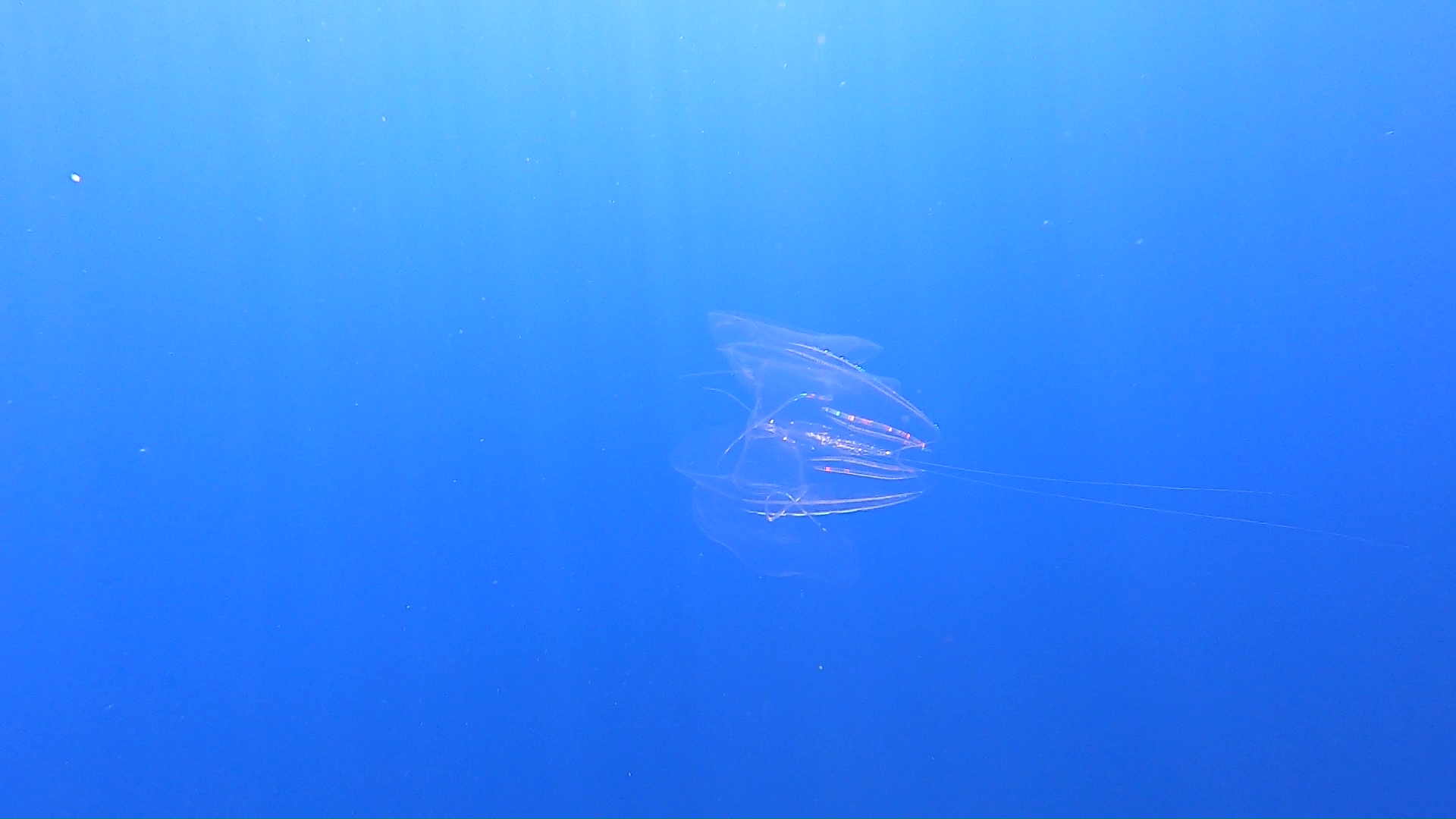
Ecological aspects
The preys of B. infundibulum are all weak swimmers who can become victims of the currents generated by the animal’s tentillae: fish eggs and fry, copepod larvae, gastropod veligers, rotifers and other zooplankton.
Bolinopsis infundibulum is in turn prey to another ctenophore: Beroe cucumis. In May, up to 250 individuals per square meter were recorded in Norwegian waters, followed by a rapid decline caused by this other ctenophore. Larger individuals of B. infundibulum have been reported from deeper waters, preying on copepods, later in the year.
https://it.wikipedia.org/wiki/Bolinopsis_infundibulum
https://en.wikipedia.org/wiki/Bolinopsis_infundibulum
Gallery
